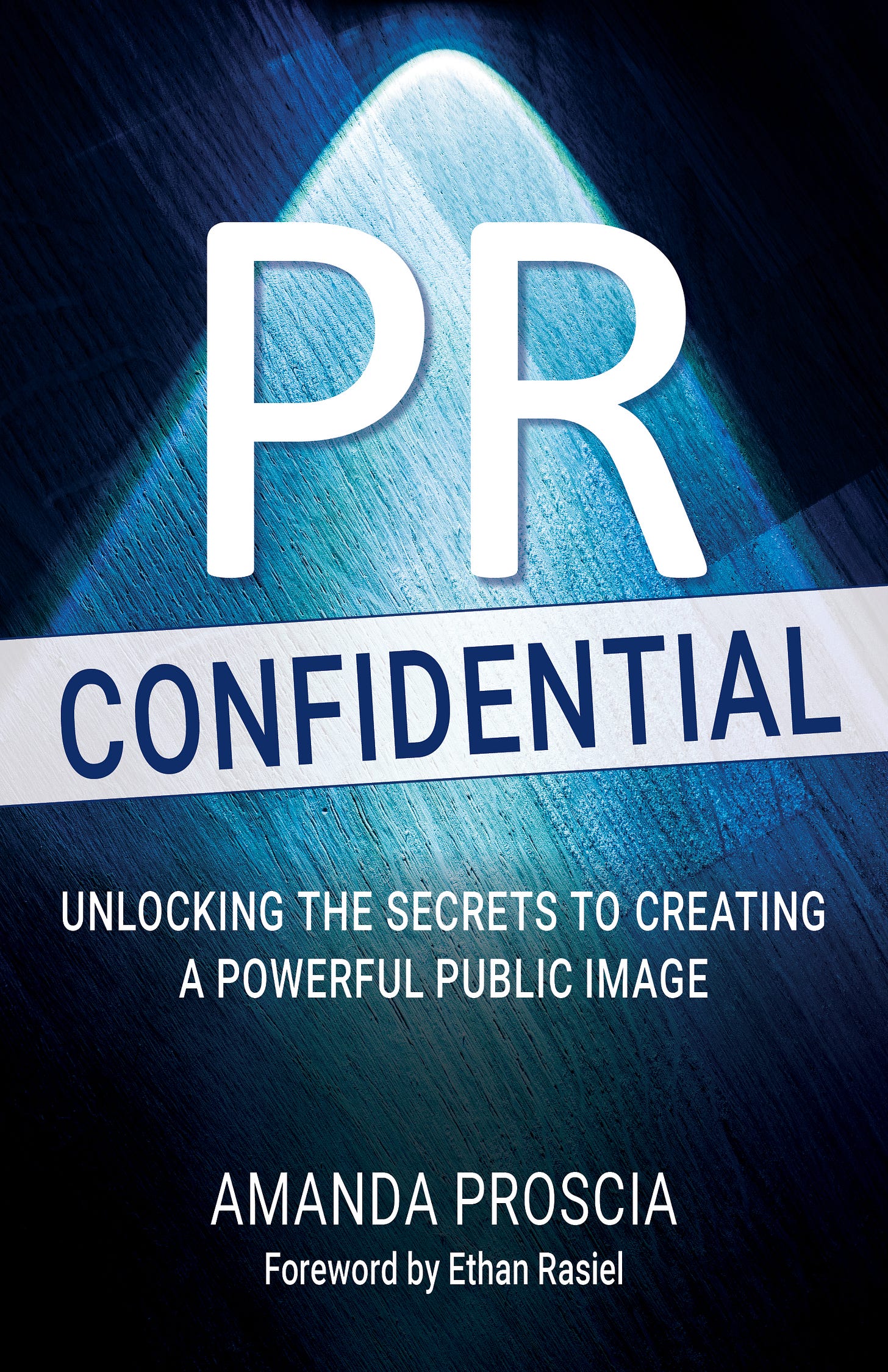#26: Campaigns that focus on shifting perceptions, then move people to take action
The value of going back to basics
If you’re a person in communications you have probably had to politely correct a stranger over what you do for a living. I once had a distant relative at Thanksgiving assume that my day-to-day was planning parties. Another friend-of-friend once thought that “PRs” paid news organizations to print human interest stories. My favorite assumption was that publicists “just” shipped products to television shows for product placement consideration.
To paraphrase today’s guest, public relations is none of those things, but rather the art of creating campaigns that focus on shifting perceptions, then move people to take action.
Sounds simple, right? Yes — to a point. But I would argue that the most crafts worth doing can be explained in just a few words. It’s execution that can get complex.
That’s why I was interested in interviewing today’s guest, Amanda Proscia. She wrote a book on the art of PR, called PR Confidential: Unlocking the Secrets to Creating a Powerful Public Image.
The book has a no-nonsense approach to educating people on what exactly public relations is and how it fits into a larger business and marketing strategy.
And in a world where we often wring our hands about the future of the industry and how much it has changed, there is magic in revisiting the basics. Because no matter how senior or experienced we get in this profession, we will always need buy-in, budget or partnership from people who think storytelling is something you only need before your toddler’s bedtime.
What made you decide to write a book about PR?
Over my more than 30 years working in PR, I’ve come to the uncomfortable realization that very few people understand what public relations is. This has become even more frustrating now that I’m an agency owner working with clients who are business leaders, or even Chief Marketing Officers who, despite hiring my agency to work for them, clearly do not grasp what we do.
After spending day after day answering the same questions about our work, I decided to write a book that addresses each of them, while also providing the level of detail that can truly demystify PR. After all, it’s hard for anyone to benefit from something when they don’t understand what it is, how it works, or the ways it can be applied for them. My hope is that this book will help solve that issue and make PR more accessible and valued. It would also be a nice change if the people in my life finally stopped asking me to explain my job!
What is the biggest myth about our craft that needs to be debunked?
Too often I hear business leaders dismiss their PR team as “just communicators” or use limiting terms for our work that pigeon-hole us as simply writers or news pitchers. The truth is, public relations professionals should be seen as a business’s core team.
There’s a few reasons for this. First, we’re on the front-lines with stakeholders, both external and internal. That means we have access to real-time feedback that can be valuable in upper-level decision-making. Second, we’re skilled in perception management. A PR team spends its time analyzing how things are seen and devising ways to shift that, or anticipate a shift that might be coming. And while that type of expertise is always brought in for crisis management, it has just as much value in other business planning such as product launches, sales, growth initiatives and corporate culture.
You’ve spent 30 years in the industry. What has been the biggest change in PR since you began?
Digital communications. When I started, media lists were built by pulling information from giant books, and releases were faxed, individually, to each reporter on the list. If a release was accompanied by a press kit, those had to be built by hand. I remember piles of pocket folders being stuffed one by one with headshots, bios, company backgrounders, product information, etc. and then mailed out.
Now we reach the media through email, Slack, text, and even social channels. It means we can get exactly the right pitch to each reporter, in exactly the way they want to be reached. Best of all press kits can be sent as attachments, or links built directly into the release.
Having those assets digitally makes them far more flexible and useful too. Particularly for my agency with our focus on tech PR, we’re able to leverage that to add things like explainer videos, 3D renderings of products, or demonstrations of tech, all as available links.
And, what will the next 30 years bring to communications and PR?
If I get my wish, it will be that our work is better understood and valued. There’s no reason PR can’t be as widely grasped as other marketing disciplines like advertising or social media management.
As an outcome of that improved understanding, I hope that we’ll find more applications for PR, and an expansion of our role in the coming years. In the nearer term, it would be great to see more leaders, across all industries, seeking out PR to help them achieve their goals in ways that go beyond the marketing and advertising they tend to rely on now.





